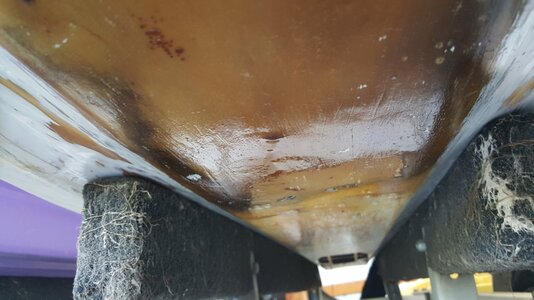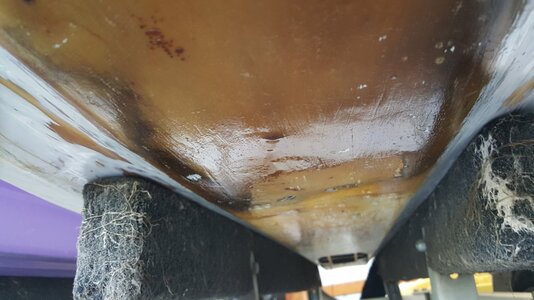Its very simple, but adds extra cost. It requires that you can access both side of the project, so if the damage extends past the bulk head, it may not work for you. The reason to use this way is that it can allow you to minimize the work to recreate the proper shape, it allows a repair to be vacuum bagged saving some weight.
Wax the hull because it is your plug. in your case you are going to need to isolate the hull with visqueen, packing tape, or something else that will protect the mold from contamination
Layup glass, on your hull (aka your plug) allowing for a decent overlap of the area you are going to cut out of the hull. Allow dry, remove. This is your mold. Making the mold out of iso resin could save a little money, but the repair must be epoxy, so it may save you more to buy epoxy in a larger volume.
Cut out the damaged area and prep the hull. You will need to make sure everything that is saturated has been removed, and everything you are keep is throughly cleaned a sanded.
Wax and then Reattach your "mold". Ratchet straps would work good for you.
Layup your repair frp the inside. Start by rebuilding the thickness of the hull and complete with a significant overlap.
It would be a good idea to layup on the outside too since this is such a big job in such an important area. (Obviously after you remove the mold) (i have never tried it but ypu could potentially line your mold with a layer of glass before you reattach it, which would put a wet layer on the outside and a sandwich in the process, ive never done it, so im not sure it would work)
--
--
Some important things of note. You need to determine how much glass you need. You can start with a thinner layer like the 1208 biax i like, and then use some thicker material like a heavy weave to build thickness quicker. The mold thickness is relative to its size (overbuioding is a waste of money while under building will cause distortion). I would suggest you speak to some who can calculate how much material you need for your given thickness to minimize costs, as you can then buy just the riht amount of glass and use that to calculate your resin needs (i keep extra material so i just eyeball it). If ita your first time, baggong the repair is probably not a good idea.
Just realize yoi are taking pn a huge project and the costs could be much more than the figure i ball parked. I think this would be a good project to salavage a superfreak, ricker, etc, but i think this job is a waste of time and money. I think you should just get a different hull. But, if you are dedicated to the learning experience, dont mind the cost and accept a high chance of failure, it would be a good learning opportunity.



